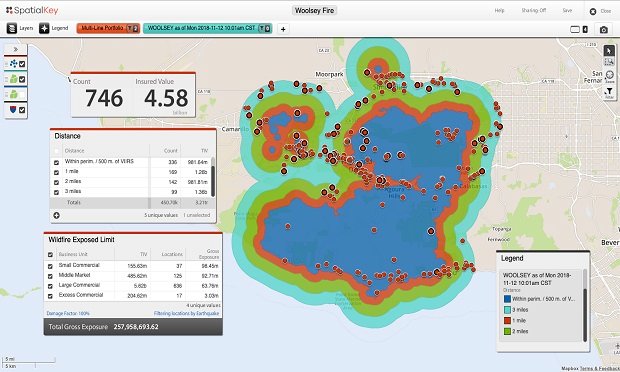Big data seems to be all the rage these days, but just having“big data” is not enough. If the data isn't helping yourorganization be nimble, it's time to start learning abouthigh-performance analytics.
|The amount of data available to analyze is expandingexponentially. Social media, sentiment data, blogs, sensor data,transactional data, third-party data, and other big data sourcesare streaming in. Insurers looking at scenarios need to makedecisions in minutes or at most hours, not days or weeks. Plus,it's very time-consuming to create, test and evaluate everyanalytical model prior to production.
|High-performance analytics (HPA) allows modelers to work fasterwith full sets of data—not sample sets. This can provide the typeof nuanced analytics that allows an insurer to be more successfulin high-risk situations, create innovative—and profitable—new meansof insuring customers, and respond to large-scale disasters in amore relevant and cost-effective way.
|An End to Sampling
|HPA provides insights from big data in shorter reporting windowsusing analyticalcapabilities executed in highly scalable, in-memory distributedarchitecture. Customers can prepare, explore and model multiplescenarios using data volumes never before possible and can processcomplex analytical algorithms faster—quickly delivering betteranswers for decision makers.
|Today, many insurers are using advanced analytical techniquessuch as generalized linear modeling for ratemaking and productpricing, and a recent survey byTowers Watson showed that 70 percent ofU.S. insurers are usingpredictive modeling for personal auto insurance.
|However, actuaries often rely on subsets of historical data torun pricing models since it is too time-consuming to prepare thedata and run the models using all the data. Sampling has itslimitations. If you are pricing claims with 1 million recordsversus 10,000, you will be much less likely to encounter outliersthat throw the models off.
|By using HPA, insurers can now run robust, precise analysis on all their data. They can alsoincorporate external data (such as Google maps, GPS, creditscoring, social media, etc.) to supplement the results.
|Take the example of segmentation and pricing. Currently,insurers use a handful of variables to support those two processes.Because it operates much faster, HPA helps insurers increase thenumber of variables used in “what if” analysis to find the oneswith the biggest impact on profitability.
|Here are three more areas where HPA canimprove insurer profitability:
|Telematics
|According to a study by ABI Research, the number of telematics users willincrease from fewer than 2 million in 2010 to nearly 90 million by2017, inundating insurers with data from these in-car recorders.Many insurers are already struggling to analyze existing telematicsdata.
|As it increases, HPA is the only option to analyze billions ofdata records in a fraction of the time required by traditionalcomputing environments. With that ability, insurers can betterunderstand how to use telematics to create innovative rate plansand learn more about how driving habits influence claims.
|Customer Intelligence
|As customer interactions in insurance move from in-person todigital channels, insurers must react faster and better predictfuture behavior. Using HPA, they can detect changes in customerbehavior in real time.
|Insurers can also improve customer experiences and makerelevant, real-time offers with higher acceptance probabilities.Faster analytics delivers predictive modeling results more quicklyand identifies the best future action to take while consideringboth financial and organizational constraints.
|Catastrophe Modeling
|Insurance companies are well-equipped to manage the potentiallosses associated with claims from individual fires and automobileaccidents because of a wealth of data. Actuaries can determinefuture losses with a high degree of confidence.
|However, since catastrophic events are relatively infrequent andhistorical data is limited, it's virtually impossible to reliablyestimate potential future catastrophe losses usingstandardactuarial techniques.
|With HPA, actuaries can take all the data points available fromprevious events and begin to create more robust models. Inparticular, modelers can incorporate information available after anevent from weather and geological services that denote storm paths,wind speeds and Richter scale readings, and overlay it onto datafor the properties they insure in other parts of the country thatmight experience similar catastrophes. This can give actuaries abetter idea of how to price and who to cover.
|The Power of Data
|When I talk with insurers about HPA, I often run acrossexecutives who understand they have access to all this data, butask “So what? How does running analytics faster affect the bottomline?” HPA not only provides enhanced analytical model performanceby eliminating sampling, but it gives you back somethingprecious—time.
|Hours spent prepping and loading data decline to minutes, weeksto days. One of my clients talks about how it takes six days toanalyze one day's worth of data. What would happen if you could doit in six minutes?
Want to continue reading?
Become a Free PropertyCasualty360 Digital Reader
Your access to unlimited PropertyCasualty360 content isn’t changing.
Once you are an ALM digital member, you’ll receive:
- All PropertyCasualty360.com news coverage, best practices, and in-depth analysis.
- Educational webcasts, resources from industry leaders, and informative newsletters.
- Other award-winning websites including BenefitsPRO.com and ThinkAdvisor.com.
Already have an account? Sign In
© 2024 ALM Global, LLC, All Rights Reserved. Request academic re-use from www.copyright.com. All other uses, submit a request to [email protected]. For more information visit Asset & Logo Licensing.








